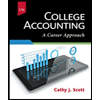
1.
Compute the return on assets for the most recent year and to state the company that provided the highest
1.
Explanation of Solution
Return on assets: Return on assets is the financial ratio which determines the amount of net income earned by the business with the use of total assets owned by it. It indicates the magnitude of the company’s earnings with relative to its total assets.
The return on asset ratios of Incorporation AE and Incorporation UO for the most recent years is given below:
| Particulars | Incorporation AE | Incorporation UO |
Table (1)
Working Note:
Determine the average total assets of Incorporation AE.
Determine the average total assets of Incorporation UO.
Comparing the return on assets of the two companies from Table (1), Incorporation UO is having higher return on assets ratio of 11.31% during the current year.
2.
Explain the cause(s) of any differences using ROA profit driver analysis and to explain the ownership versus the rental of property, plant, and equipment affect the total asset turnover ratio.
2.
Explanation of Solution
Return on assets (ROA) profit driver analysis: Return on assets (ROA) profit driver analysis categorizes the ROA into two factors that are Net profit margin and Total asset turnover, which helps the management to improvise ROA. The ROA profit driver analysis can be computed by using the following formula:
Net profit margin ratio: Net profit is the financial ratio that shows the relationship between the net profit and net sales (Operating revenue). Net profit is the difference between total operating revenue and total operating expenses. It can be calculated by dividing net profit and operating revenue. Net profit margin ratio can be calculated by using the following formula:
Total asset turnover ratio: Total asset turnover ratio shows the relationship between the net income and total assets. Total asset turnover ratio is used to determine how much the sales revenue is generated with the efficient utilization of total assets. Total asset turnover ratio can be calculated by using the following formula:
Prepare a table showing the changes in ROA using ROA profit driver analysis as given below:
Determine the return on asset ratio for the current year and prior year.
| ROA Analysis | Incorporation AE | Incorporation UO |
|
| ||
| Return on Assets | 0.0473 or 4.73% | 0.1131 or 11.31% |
Table (2)
Comparing the return on assets of the two companies from Table (2) Incorporation UO has a higher ROA than Incorporation AE because it has a greater profit margin of 0.07 or 7% that compensates for having lower total asset turnover ratio of 1.617 or 11.67%.
Title of property, plant, and equipment would decrease the total asset turnover ratio comparative to rentals. The possessed assets would be included while determining the “average total assets” whereas the rented assets would not be included and hence, the asset turnover would be lesser at the same level of sales volume.
Compare the ROA profit driver analysis for Incorporation AE and Incorporation UO to the ROA profit driver analysis for their industry and to comment whether Incorporation AE and Incorporation UO outperform or underperform the industry
Explanation of Solution
Return on assets (ROA) profit driver analysis: Return on assets (ROA) profit driver analysis categorizes the ROA into two factors that are Net profit margin and Total asset turnover, which helps the management to improvise ROA. The ROA profit driver analysis can be computed by using the following formula:
Prepare a table showing the comparison of industry average ratio with Incorporation AE and Incorporation UO:
| ROA Analysis | Industry Average | Incorporation AE | Incorporation UO |
| Net Profit Margin (Refer Table (2)) | 0.038 | 0.024 or 2.4% | 0.070 or 7% |
| Total Asset Turnover (Refer Table (2)) | 2.02 | 1.936 or 193.6% | 1.617 or 161.7% |
| Return on Assets (Refer Table (1)) | 0.067* | 0.0473 or 4.73% | 0.1131 or 11.31% |
Table (3)
From Table (3), Incorporation UO has a greater ROA and Incorporation AE has a lesser ROA than the industry average. This is due to the greater net profit margins maintained by Incorporation UO. This is expected, given that the Incorporation UO competes by product differentiation rather than price differentiation.
Incorporation AE and Incorporation UO are having lower total asset turnover ratios compared with the industry average.
Want to see more full solutions like this?
Chapter 5 Solutions
Connect Access Card for Financial Accounting
- Mercer Company applies manufacturing overhead to jobs on the basis of direct labor hours used. Overhead costs are expected to total $428,400 for the year, and direct labor usage is estimated at 89,250 hours. For the year $415,320 of overhead costs are incurred and 92,400 hours are used. Compute the manufacturing overhead rate for the year.arrow_forwardPlease provide the correct answer to this general accounting problem using valid calculations.arrow_forwardCan you solve this general accounting problem using appropriate accounting principles?arrow_forward
- Please answer this help! The answer for three thorugh 5 is not 0. The last person to help me on Bartleby got this incorrect!arrow_forwardHow can I solve this financial accounting problem using the appropriate financial process?arrow_forwardExplain and add some more info to it as well please.arrow_forward
- Please help!!!! I need it badarrow_forwardA company sells a product for $25 per unit. The variable cost per unit is $15, and the total fixed costs are $50,000. a) How many units must the company sell to break even? b) If the company wants a profit of $10,000, how many units must it sell?arrow_forwardWhat is the amount of sales that will be necessary to earn the desired profit?arrow_forward
 Cornerstones of Financial AccountingAccountingISBN:9781337690881Author:Jay Rich, Jeff JonesPublisher:Cengage Learning
Cornerstones of Financial AccountingAccountingISBN:9781337690881Author:Jay Rich, Jeff JonesPublisher:Cengage Learning Financial Accounting: The Impact on Decision Make...AccountingISBN:9781305654174Author:Gary A. Porter, Curtis L. NortonPublisher:Cengage Learning
Financial Accounting: The Impact on Decision Make...AccountingISBN:9781305654174Author:Gary A. Porter, Curtis L. NortonPublisher:Cengage Learning College Accounting (Book Only): A Career ApproachAccountingISBN:9781337280570Author:Scott, Cathy J.Publisher:South-Western College PubPrinciples of Accounting Volume 1AccountingISBN:9781947172685Author:OpenStaxPublisher:OpenStax CollegePrinciples of Accounting Volume 2AccountingISBN:9781947172609Author:OpenStaxPublisher:OpenStax College
College Accounting (Book Only): A Career ApproachAccountingISBN:9781337280570Author:Scott, Cathy J.Publisher:South-Western College PubPrinciples of Accounting Volume 1AccountingISBN:9781947172685Author:OpenStaxPublisher:OpenStax CollegePrinciples of Accounting Volume 2AccountingISBN:9781947172609Author:OpenStaxPublisher:OpenStax College





